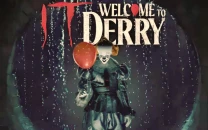More ‘real people’ on Indian TV
The number of reality shows is expected to rise based on target rating points.

“In the coming time, I think there will be more interest in reality shows with real people. For the last few years, the audience has been looking at celebrities in reality shows. Now they are starting to say, ‘I want to see me on screen’,” Aga said in an interview with IANS.
BBC Worldwide Production India — part of the BBC group, has produced shows like “Jhalak Dikkhla Jaa”, “Wife Bina Life” and “Pati, Patni Aur Woh” in the country.
“In the coming years, more shows with, real people as contestants will be produced. People respond to seeing someone they personally know more than anyone else,” she added.
However, Aga does stress the importance of a big star as the host or judge of the show.
“It has been instrumental in getting TRPs. You can say that audiences expect big celebrities somewhere in the show to give a certain amount of credibility, a certain amount of glamour and to some extent, a certain amount of relatability” she said.
But then why do certain shows, in spite of boasting of big names, fall flat and fail to garner the expected TRPs for the channel? As was the case with Shah Rukh Khan who hosted “Zor Ka Jhatka”, inspired by the international show “Wipe Out”?
“The audience can come to a show for celebrities and the show can get a first stamp of approval, but television is about content and if your content is not working for your audience, then, regardless of the celebrity, the audience will move on,” explained Aga.
“That risk is borne by the channel, because it’s the channel which brings the celebrity on board. However, it’s risky not to have a celebrity because then, you can’t get people to come to the programme. You have to find the right celebrity for the right concept; only then it pays off,” she added.
According to a joint report released by The Federation of Indian Chambers of Commerce and Industry (Ficci) and KPMG in 2009, the Indian television industry is projected to grow at the rate of 15 per cent over 2010-14 to reach the size of, INRs521 billion by 2014.
Aga, who will be speaking at the upcoming Ficci Frames this year on the topic, “Changing trends in consumer taste in television”, also listed genre diversification as one of the changes that will mark the industry soon.
“I can see genre diversification. I can see a lot more happening in that space, because more and more niche channels are launching, as the market gets bigger,” she revealed.
Aga agreed that TRPs were the most important factor for content, in the Indian television industry.“I really believe that, because of the structure of the industry. Indian channels are paying carriage fees — they have to rely on advertisements to generate income. As long as they have to focus completely on advertising, they will necessarily have to deliver TRPs.”
So what would be considered a good TRP rating for a channel?
“It depends on the channel and it depends on the time slot. I think a niche channel will be happy with one rating, but for a general entertainment channel (GEC), one is a flop. Obviously prime time ratings are the most sought after,” she informed.
Published in The Express Tribune, March 25th, 2011.



















COMMENTS
Comments are moderated and generally will be posted if they are on-topic and not abusive.
For more information, please see our Comments FAQ